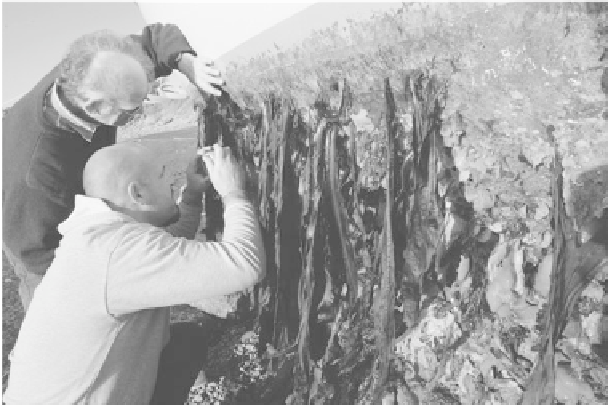Environmental Engineering Reference
In-Depth Information
further spread of many invasive marine species including the northern Pacifi c sea-
star
Asterias amurensis
and the European green crab
Carcinus maenas
(Cohen
et al
.
1995; Taylor
et al
. 1999; Ross
et al
. 2003).
Fouling on maritime vessels has long facilitated dispersal of marine biota
(Fig. 14.3). Over two thousand years ago, fouling on ocean-going Polynesian ves-
sels radiating throughout the Pacifi c were probably responsible for transferring
many species beyond their native ranges (Carlton and Hodder 1995). From the
1300s, European vessels began to transport hull-fouling and boring organisms
from the north-eastern Atlantic throughout the world (see Carlton and Hodder
1995 and references therein). In fact, modern observational and experimental
studies examining the dispersal of fouling taxa on a replica 16
th
century wooden
sailing vessel, concluded that such vessels may have signifi cantly altered the distri-
bution of marine and estuarine organisms globally (Carlton and Hodder 1995).
h e development and widespread use of tributyltin (TBT) antifouling paints in
the 1960-1970s resulted in a dramatic decrease in fouling on treated vessels (Evans
et al
. 2000; Lewis 2001), but the total prohibition of TBT in 2003 (IMO 2001),
and its replacement with less eff ective biocides such as copper (Floerl
et al
. 2004;
Piola and Johnston 2006a,b; Daff orn
et al
. 2008) may result in high numbers of
fouling invaders (Minchin and Gollasch 2003).
Aquaculture is another important vector for the transport of alien marine spe-
cies, both historically and today (Minchin 2007). Since the 1800s some organisms,
such as oysters, have been transported between distant bioregions for commercial
Fig. 14.3
Scientists inspect the hull of a heavily fouled yacht washed ashore
in the Port of Nelson, New Zealand. Hull-fouling assemblages present included
several known invasive pest species. Photo:
The Nelson Mail.


